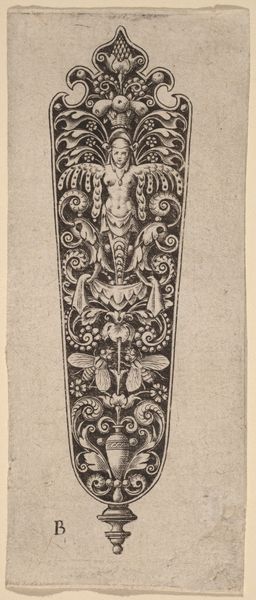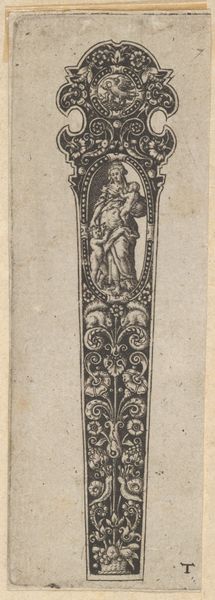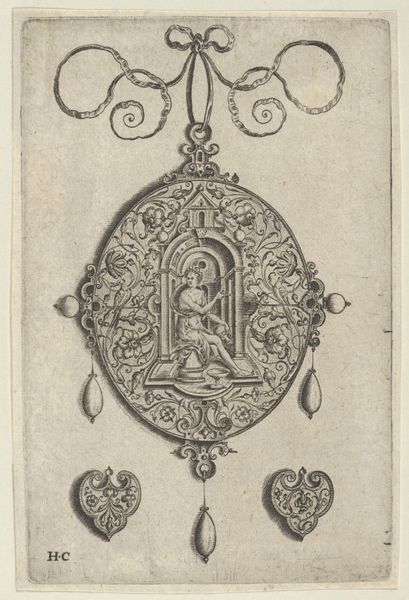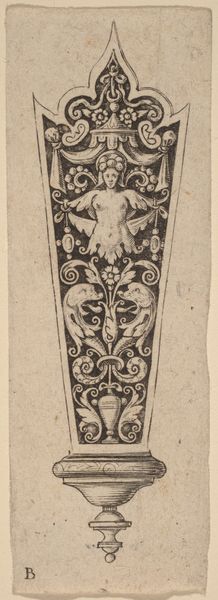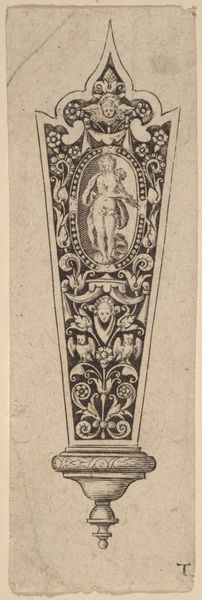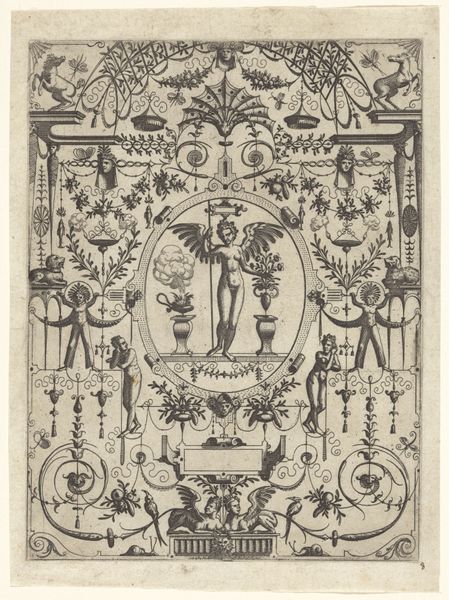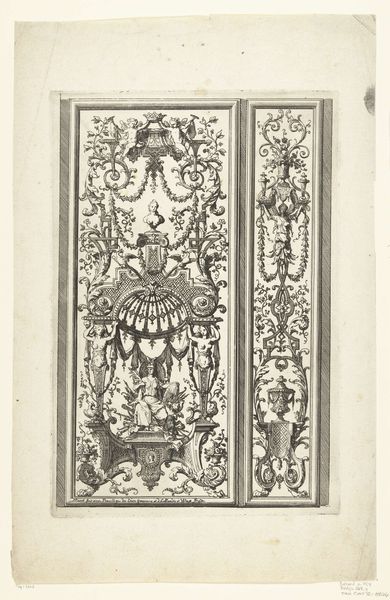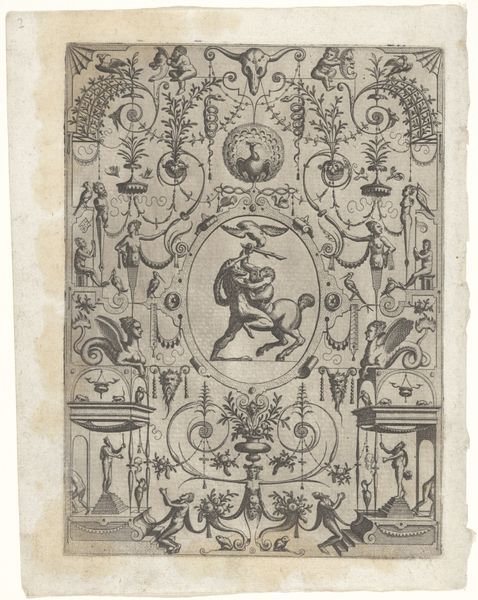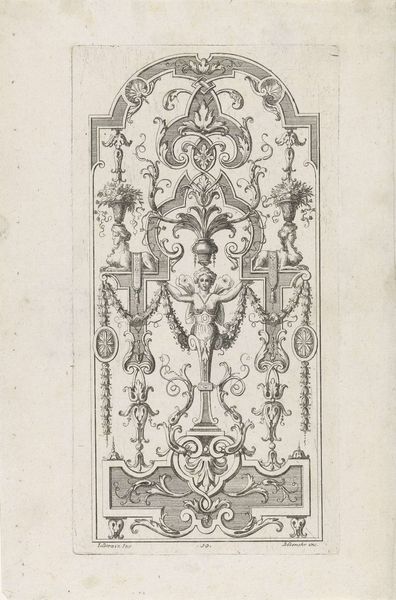
ornament, print, engraving
#
ornament
#
baroque
# print
#
form
#
line
#
engraving
Copyright: National Gallery of Art: CC0 1.0
Editor: So, this is *Ornament*, an engraving print of an unknown date by Theodor de Bry. It’s stunning—so intricate and packed with symbolism. I’m particularly struck by the mixture of classical imagery and naturalistic elements. What do you make of this piece? Curator: It’s fascinating to see how De Bry, positioned as a publisher and printmaker in the late 16th and early 17th centuries, utilized ornament. Prints like this served a crucial public function, acting almost like proto-Pinterest boards. Consider the role these played for artisans needing visual references, shaping designs from weaponry to tapestries. Do you see that dissemination of imagery as democratizing art, or something else? Editor: That's a great point! I hadn't considered its function beyond aesthetics. I suppose it depends on who had access to the prints, right? If only wealthy workshops could afford them, it might just reinforce existing hierarchies. Curator: Exactly. It speaks to how knowledge and visual culture were circulated, but also controlled, through the printing press. What do you think about the Baroque style of ornament shown in the print? How does it contrast with earlier, perhaps more restrained, approaches? Editor: Well, there’s certainly a sense of abundance here, with the swirling lines, the cherub, the animals, and the allegorical figure... all tightly packed. Compared to the Renaissance, where things felt a bit more orderly, Baroque seems to revel in dynamic energy and excess. Curator: Precisely. The very act of accumulating such imagery in one place serves to construct an identity and declare status. Looking closely, what societal values do you believe are embedded within that design? Editor: I see aspirations to nobility, certainly, given the crest-like appearance and classical figure. Maybe also a connection to the natural world and abundance, judging by the integration of fruits and animals. This engraving offers more insight into the priorities and ideals of the period than I originally anticipated. Curator: Indeed! And, reflecting on this “ornament,” it reminds us how vital prints were, in disseminating social aspirations and shaping artistic expression in a nascent public sphere.
Comments
No comments
Be the first to comment and join the conversation on the ultimate creative platform.
